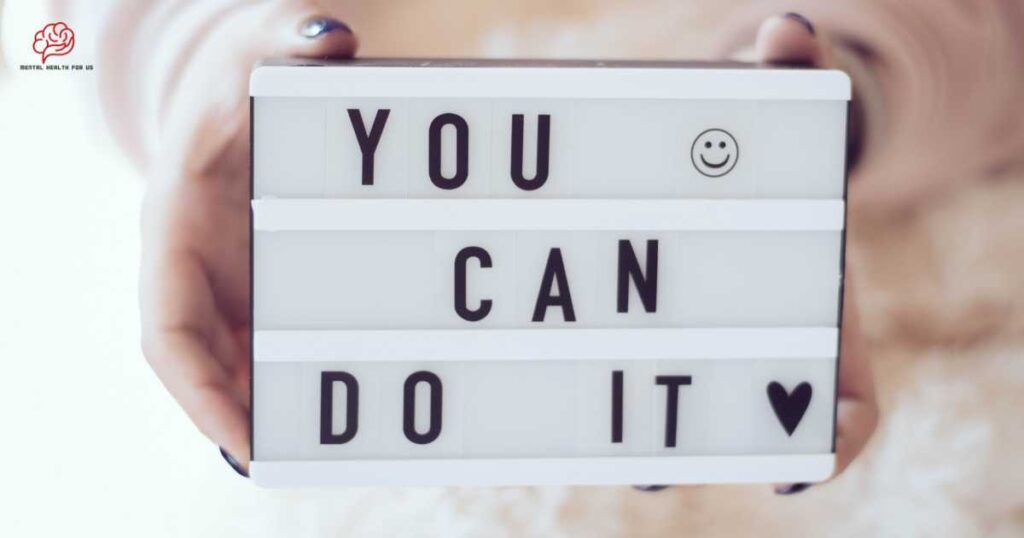Introduction
Can-you-do-dbt-and-cbt-at-the-same-time? Dialectical Behavior Therapy (DBT) and Cognitive-Behavioral Therapy (CBT) are two popular therapies that can help with many mental health issues. DBT is ideal for borderline personality disorder and emotional dysregulation because it emphasizes emotional regulation and interpersonal effectiveness. However, CBT modifies thought patterns and behaviors to treat psychological conditions. DBT and CBT have different foundations and principles, but combining them may help some people. This discussion discusses can you do DBT and CBT at the same time, the pros and cons of using DBT and CBT together.
Dialectical Behavior Therapy (DBT)
DBT was developed to treat Borderline Personality Disorder. However, it is now widely accepted as an effective treatment for many mental health issues. DBT uses behavioral therapy, cognitive therapy, and mindfulness to help people manage their emotions, improve their coping skills, and improve their relationships. Individual therapy and group skills training teach people how to manage their emotions, solve problems, and communicate better. DBT helps people build a life worth living by teaching them how to manage intense emotions, reduce impulsive and self-destructive behaviors, and handle difficult situations.
Cognitive Behavioral Therapy (CBT)
CBT is a talk therapy that addresses specific issues and helps people change unhelpful thoughts and behaviors. It holds that our thoughts, feelings, and behaviors are interconnected, and changing our thoughts can improve our emotional well-being.
A mental health professional helps CBT patients identify negative thought patterns and develop ways to change them. This can help people understand how their thoughts affect their emotions.
CBT boosts mental health and coping skills. It gives people everyday stress, anxiety, and depression management tools. CBT is also effective for treating addiction, panic disorder, and PTSD.
By addressing specific issues and teaching new thinking and behavior patterns, CBT can improve well-being and quality of life. It empowers people to manage their thoughts and emotions and adopt healthier habits.
In summary, CBT is an effective treatment that addresses specific issues and helps people change unhelpful thoughts and behaviors. It improves coping skills and mental health, making it useful in treating addiction, anxiety, and depression.
Can You Do DBT and CBT at the Same Time?
Many people wonder if they can receive DBT and CBT simultaneously. These therapeutic approaches can be combined to treat various mental health conditions despite their slightly different foci and methods.
DBT and CBT are often combined to create a flexible and comprehensive treatment plan that meets the patient’s needs and goals. DBT emphasizes emotion regulation, distress tolerance, mindfulness, and interpersonal effectiveness, while CBT addresses negative thought patterns and cognitive distortions. Both emotional regulation and underlying thoughts that cause problems can be addressed by combining these methods.
Some people receive CBT from their individual therapist while also attending DBT group therapy. This integrated approach allows for the development and practice of multiple coping strategies in social situations. Individual therapy addresses personal issues, while group therapy fosters skill-building and peer feedback.
DBT and CBT compatibility depends on treatment goals and mental health professionals’ expertise. Combining these effective therapies gives people more tools to handle difficult situations, intense emotions, and improve their quality of life.
Benefits of Combining DBT and CBT
DBT and CBT can improve mental health treatment. CBT targets negative thought patterns and cognitive distortions, while DBT develops emotional regulation and interpersonal skills. Integrating these approaches allows patients to address their thoughts and emotions, improving treatment outcomes. DBT and CBT can treat a variety of mental health issues in a comprehensive and flexible manner. This integrated approach gives people a variety of coping strategies and the chance to practice them in individual and group therapy. Combining DBT and CBT improves emotional well-being, coping skills, and quality of life.
Enhances Emotion Regulation Skills
Combining DBT and CBT improves emotion regulation. DBT emphasizes understanding and acknowledging emotions, while CBT teaches how to change and manage them. People can create a complete emotion regulation toolkit by combining these two methods.
Understanding emotion function and intensity is key to DBT. It helps people accept and validate their emotions without judgment and recognize that emotions do not define them. However, CBT uses specific methods to identify and change negative thought patterns and beliefs that cause emotional distress.
DBT also offers skills training modules that improve emotion regulation. Mindfulness skills to increase emotional awareness and reduce reactivity, interpersonal effectiveness skills to improve communication and navigate difficult relationships, emotion regulation skills to manage intense emotions, and distress tolerance skills to cope with stressful situations without self-harm.
DBT and CBT can teach people how to manage their emotions. They develop healthy coping skills, accept emotions without judgment, and challenge negative thought patterns. This integrated approach can greatly improve emotional management and quality of life.
Improves Interpersonal Relationships
DBT and CBT greatly improve relationships. It emphasizes communication, assertiveness, and conflict resolution, while CBT helps people identify and change negative thought patterns that affect relationships.
DBT has modules to improve interpersonal skills. Active listening, expressing needs and boundaries, and conflict resolution are taught in these modules. These skills help people form healthy, happy relationships.
CBT helps people identify and reframe negative thought patterns that can hinder communication and relationship building. Challenge cognitive distortions like assumptions, black-and-white thinking, and mind-reading to develop more balanced and realistic perspectives. This can improve empathy, understanding, and conflict resolution.
The combination of DBT and CBT improves interpersonal skills. First, it helps people assertively communicate their needs, set boundaries, and resolve conflicts. Second, it challenges negative thought patterns that may lead to misinterpretation, fostering empathy and understanding. Finally, it promotes open and collaborative problem-solving in relationships.
DBT and CBT together improve relationships greatly. DBT improves communication, assertiveness, and conflict resolution, while CBT challenges negative thought patterns. Integrating these therapies can improve interpersonal effectiveness and create healthier, happier relationships.
Provides a Wide Range of Treatment Options
Combining DBT and CBT offers many mental health treatment options. Research shows that both therapies can treat eating disorders, substance use disorders, trauma-related disorders, depression, and anxiety.
Modules in DBT improve interpersonal effectiveness and emotional regulation. This therapy helps people communicate assertively, resolve conflicts, and set boundaries. It helps people cope with intense emotions and build resilience, improving quality of life.
However, CBT helps DBT by identifying and challenging negative thought patterns. Correction of cognitive distortions and unhelpful beliefs leads to more balanced and realistic perspectives. Cognitive reframing can improve mental health and behavior, helping people handle difficult situations.
Combining these two methods creates a holistic treatment plan. They learn to communicate, regulate emotions, and reframe negative thoughts. This integrated approach improves outcomes and gives people many ways to manage their mental health.
Potential Downsides of Doing Both DBT and CBT at the Same Time
DBT and CBT can be beneficial, but there are risks. Time and commitment may be an issue. DBT and CBT require regular therapy and homework, which can drain time and energy. Some people may find it overwhelming to integrate both therapies because they must learn and use different skills and techniques. This may cause confusion or difficulty engaging in either therapy. DBT and CBT may overlap and redundancy in content, leading to repetitive discussions and interventions that may reduce their efficacy. Finally, long-term treatment with multiple therapists can be costly, so some may worry about combining two therapies. People considering DBT and CBT should discuss the pros and cons with their mental health professionals to find the best treatment for them..
Increased Risk for Overwhelm and Burnout
Combining DBT and CBT may increase overwhelm and burnout. Combining two intensive therapies can present unique challenges and emotional strains that must be managed.
DBT and CBT require significant effort. DBT develops emotion regulation, interpersonal effectiveness, distress tolerance, and mindfulness. CBT uses critical thinking to identify and change negative thoughts and behaviors.
Both therapies are effective for a variety of mental health conditions, but doing both at once can be overwhelming. DBT’s emotional regulation and CBT’s cognitive restructuring may increase emotional load and burnout risk.
Patients undergoing these therapies must prioritize self-care and know their limits. Breaks, relaxation, and fun activities can prevent overwhelm and burnout. Open communication with mental health professionals helps keep therapy sessions manageable and sustainable.
In summary, DBT and CBT can help people with intense emotions and behaviors, but they risk overwhelm and burnout. Self-care and awareness of limits are crucial to managing these potential challenges and maintaining emotional well-being during therapy.
Conclusion
This article reviewed can you do DBT and CBT at the same time. Finally, combining DBT and CBT can improve mental health and well-being. Integrating these two approaches creates a holistic treatment plan that addresses emotional regulation and cognitive restructuring.
Using DBT’s focus on emotion regulation, distress tolerance, and interpersonal effectiveness and CBT’s focus on identifying and challenging negative thought patterns, people can learn to handle difficult situations, manage intense emotions, and improve their quality of life. This combination works well for borderline personality disorder, anxiety, and PTSD.
However, combining both modalities may have drawbacks. The intensity of DBT and CBT may require multiple therapy sessions and consistent skill practice. For those with limited time or money, this can be difficult. The components of each approach may overlap, resulting in redundant therapy sessions.
To decide whether to combine DBT and CBT, consult a mental health professional who can assess your needs and tailor the therapy approach. Combining both modalities can be powerful and effective, but you must carefully weigh the pros and cons to get the best mental health results.
FAQs
How Do DBT and CBT Differ When Treating Trauma?
DBT and CBT treat trauma differently. Both can help, but DBT emphasizes emotional regulation, acceptance, and interpersonal skills, making it ideal for trauma-related emotional dysregulation. CBT addresses and changes trauma-related cognitive distortions and beliefs. Their choice depends on the patient’s needs and therapeutic goals.
Is DBT more effective than CBT?
The effectiveness of DBT versus CBT depends on the patient’s needs and the mental health issue. Assessment and client preferences and goals should determine which approach is best for their condition. Both have been shown to work. It depends on the person whether DBT is more effective than CBT.
Why is DBT so hard?
DBT requires learning and using new skills to manage emotions, distress, and relationships, making it difficult. Making lasting changes takes dedication, practice, and patience, which can be difficult for some.







